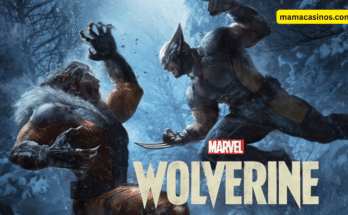Introduction
The gaming industry is constantly evolving, with new genres emerging and old ones fading into obscurity. While blockbuster titles and mainstream genres like first-person shooters (FPS), battle royales, and open-world RPGs dominate the market, many unique types of games have been overshadowed. These forgotten or overlooked games often hold nostalgic value, offering innovative mechanics and distinct experiences that shaped the gaming world. In this article, we explore various game types that people tend to forget, rekindling memories of the past and rediscovering hidden gems.
1. Text-Based Adventure Games
Before high-definition graphics and complex game engines, text-based adventure games reigned supreme. These games relied entirely on text input and narration, where players typed commands to progress through the story.
Examples:
- Zork (1980) – One of the first and most famous text adventures.
- Hitchhiker’s Guide to the Galaxy (1984) – Based on Douglas Adams’ book, this game featured humor and challenging puzzles.
Why We Forget Them:
With the advent of graphical adventures and open-world experiences, text-based games lost mainstream appeal. However, interactive fiction games continue to thrive in niche communities.
2. FMV (Full Motion Video) Games
FMV games peaked in the 1990s, utilizing pre-recorded live-action video clips to create interactive experiences. Players made choices that influenced the story’s outcome.
Examples:
- Night Trap (1992) – A controversial game that led to the formation of the ESRB rating system.
- Her Story (2015) – A modern revival where players piece together a mystery using video footage.
Why We Forget Them:
The rise of 3D graphics made FMV games feel outdated. However, indie developers have revived the genre with more interactive storytelling elements.
3. Edutainment Games
Educational games, or “edutainment,” blended learning with gaming. These titles aimed to teach math, language, history, and science while keeping players engaged.
Examples:
- Math Blaster! (1987) – A game designed to improve arithmetic skills.
- The Oregon Trail (1971) – A historical simulation teaching survival and resource management.
Why We Forget Them:
Edutainment games often cater to younger audiences and are overshadowed by modern educational apps and interactive learning platforms.
4. Puzzle Platformers
While platformers like Super Mario remain iconic, puzzle-platformers that emphasize brain-teasing mechanics have declined in popularity.
Examples:
- Lemmings (1991) – Players guided small creatures to safety using strategic commands.
- Braid (2008) – A time-manipulation puzzle game that gained cult status.
Why We Forget Them:
With the focus shifting to action-packed gameplay, many puzzle platformers have been overshadowed by more fast-paced titles.
5. God Games
God games give players divine control over a world, allowing them to shape civilizations, landscapes, and ecosystems.
Examples:
- Populous (1989) – One of the first god games, letting players act as deities controlling terrain.
- Black & White (2001) – A game where players act as gods guiding followers through moral choices.
Why We Forget Them:
The complexity and niche appeal of god games led to their decline, though some modern titles still draw inspiration from them.
6. Point-and-Click Adventure Games
Point-and-click games emphasize narrative-driven exploration, puzzle-solving, and decision-making.
Examples:
- Monkey Island series – A humorous adventure series with witty dialogue and puzzles.
- Grim Fandango (1998) – A noir-style adventure with an unforgettable art style.
Why We Forget Them:
The shift towards fast-paced action games diminished the popularity of slow-paced, dialogue-heavy adventures. However, indie studios have revived the genre.
7. Vehicular Combat Games
Vehicular combat games focus on battling opponents using armed vehicles, often in a demolition derby-style format.
Examples:
- Twisted Metal series – A high-octane combat game featuring unique vehicles and weapons.
- Vigilante 8 (1998) – A game that combined car combat with 1970s aesthetics.
Why We Forget Them:
The genre declined as battle royale and open-world racing games took over, leaving vehicular combat in the past.
8. Rhythm-Based Games
Rhythm games test players’ sense of timing and coordination, usually involving music-based gameplay mechanics.
Examples:
- PaRappa the Rapper (1996) – A pioneering rhythm game with quirky visuals and catchy tunes.
- Guitar Hero series – A cultural phenomenon that let players feel like rockstars.
Why We Forget Them:
Rhythm games had a golden era but declined due to market oversaturation and the shift towards streaming music rather than interactive experiences.
9. Stealth Action Games
While some stealth games remain popular, many classics have been forgotten as action-oriented gameplay dominates.
Examples:
- Thief series – Pioneered stealth mechanics in the late 90s.
- Splinter Cell series – Focused on tactical espionage and strategy.
Why We Forget Them:
Stealth games require patience and planning, which doesn’t always align with modern gamers’ preference for fast-paced gameplay.
10. Arena Shooters
Before battle royales, arena shooters ruled the multiplayer scene, emphasizing fast movement, reflexes, and skill-based gunplay.
Examples:
- Quake series – Defined competitive arena shooting.
- Unreal Tournament (1999) – Known for intense multiplayer action.
Why We Forget Them:
Arena shooters were overshadowed by modern team-based shooters and battle royale games, leading to their decline.
Conclusion
While gaming trends continuously evolve, many classic game genres hold a special place in history. These forgotten or overlooked games played crucial roles in shaping the industry and still have dedicated fanbases. Whether through indie revivals, remasters, or nostalgic retrospectives, these games deserve recognition for their contributions to gaming culture. Perhaps it’s time to revisit some of these hidden gems and rediscover the magic they once offered.




